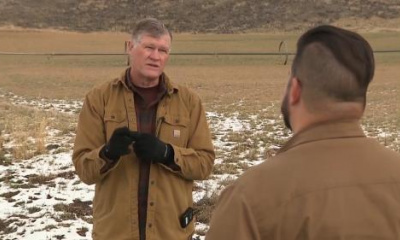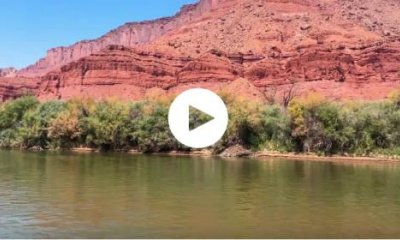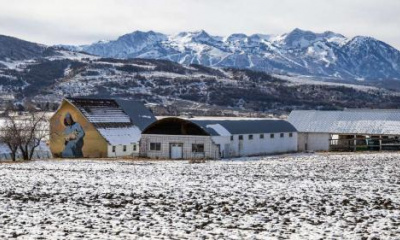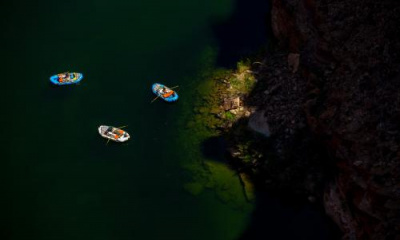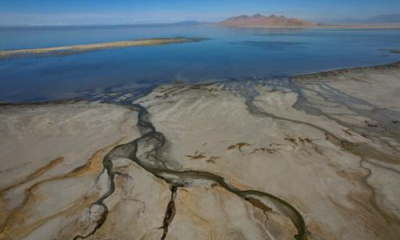A leading politician who called out companies for wanting to use more water in an over-tapped system finds an exception of his own.
Rep. Mike Schultz, the Utah House majority leader, has filed two applications to drill wells near the Great Salt Lake.
If approved by the Division of Water Rights, the requests would allow the lawmaker to pump more than 550 acre-feet each year from springs and groundwater in an aquifer west of the Promontory Mountains in Box Elder County. An acre-foot is about enough water to supply two households. Schultz, R-Hooper, said he plans to build one or two small reservoirs and use the water to raise livestock and hay on a 25,000-acre ranch. He also wants his irrigation to benefit wildlife.
“Everything I do with my ranching operation is about sustainability between wildlife, habitat and the resource as a whole,” Schultz said in an interview, “... whether that’s sage grouse, regular grouse, chuckers, partridges, as well as deer, elk, antelope, everything else.”
Keller Cattle Corp. owns the ranch and the two water right applications. It’s a company Schultz lists in his legislative financial disclosures, and he said he acquired the property about a year ago. He filed the water rights requests in late August. One of the proposed wells lies about 6 miles from the shoreline of the Great Salt Lake. But the lawmaker said he likely won’t use all 181 million gallons he’s requesting.
“It all depends [on] ... the amount of water that’s available out there to do it,” he said.
Schultz railed against Compass Minerals earlier this year over its plans to pull water from the Great Salt Lake to extract lithium. He called on the company, also located near the Promontory Range, to “do more” for the lake, which continues to struggle due to water diversions and overconsumption.
But the lawmaker said there’s a “big difference” between his ranching operation and mineral extractors.
“The mineral companies,” he said, “are taking water directly out of the lake.”
Compass Minerals recently put its lithium plans on pause, as reported by the Standard-Examiner.
After the Great Salt Lake shrunk to record lows in 2021 and again in 2022, Gov. Spencer Cox closed the Great Salt Lake basin to new water rights appropriations. But he carved out an exception for the west desert watershed, which includes Schultz’s Keller Cattle ranch.
The state engineer, who helms the Division of Water Rights, still must take other considerations into account before rejecting or approving a new request. She needs to decide whether there’s excess water even available to appropriate, for example. She must also determine whether using the water will not harm the “public welfare,” according to state code, or impact things like recreation.
The protest period for Schultz’s new water right requests ended Oct. 10. Environmental nonprofit Utah Rivers Council filed the only objection, noting the Great Salt Lake’s water shortage crisis. If the lake continues to shrivel, the protest notes, it will indeed impact recreation like boating and sailing. It will also harm the public’s welfare, as residents of the Wasatch Front choke on plumes of toxic lakebed dust.
The group further noted that while the proposed wells lie outside of the governor’s water rights suspension area, they still violate the spirit of his proclamation.
“It seems arbitrary to close the Basin to new appropriations in an effort to protect Great Salt Lake levels,” Utah Rivers Council wrote in its protest, “while simultaneously allowing other appropriations that also are likely to have impacts on the Lake, like this Application, to proceed.”
Schultz denied his ranching operation would further harm the lake. He said he intends to irrigate meadows of drought-tolerant plants and grasses. Less than 10% of his watered fields will include alfalfa. And he will drill his proposed wells down 500 feet, he said.
“It’s not connected, per se, to the Great Salt Lake’s aquifer,” he said. “Some of that water will percolate into the ground and make it into an aquifer that actually goes into the lake. So no, what we’re doing is not having an impact on the Great Salt Lake.”
But Kyle Roerink, executive director of the Great Basin Water Network, said the region’s aquifers are often linked.
“He’s saying we’re not diverting directly from the lake,” Roerink said. “But what are the issues of connectivity, when you start sticking [more] straws in the ground?”
He said the state “desperately” needs better data on watersheds and aquifers connected to the Great Salt Lake.
“As you’ve seen with the lithium companies, as you’re seeing with Schultz, people are still giving it their best shot” to use more water in the system, Roerink said. “This is one that regulators need to scrutinize.”


